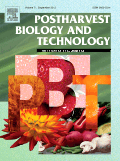
POSTHARVEST BIOLOGY AND TECHNOLOGY
Scope & Guideline
Enhancing Shelf Life: Where Biology Meets Technology
Introduction
Aims and Scopes
- Postharvest Physiology and Biochemistry:
Research in this area explores the physiological and biochemical processes that fruits and vegetables undergo after harvest, including ripening, senescence, and responses to storage conditions. This understanding is crucial for developing methods to maintain quality and extend shelf life. - Disease Management and Biocontrol Strategies:
The journal publishes studies on the mechanisms of postharvest diseases and innovative biocontrol strategies, including the use of microbial agents, natural compounds, and physical treatments to mitigate decay and extend the storage life of produce. - Quality Assessment and Sensory Evaluation:
Research focusing on the evaluation of quality attributes, sensory characteristics, and consumer acceptance of postharvest products. This includes non-destructive testing methods such as spectroscopy and imaging techniques. - Innovative Preservation Technologies:
The journal highlights advancements in packaging technologies, including modified atmosphere packaging, edible coatings, and the use of nanomaterials to enhance the preservation of fruits and vegetables. - Molecular and Genetic Approaches:
Studies involving genetic and molecular analysis to understand the mechanisms of postharvest processes, including the regulation of metabolic pathways and gene expression that influence fruit quality and resistance to chilling injury.
Trending and Emerging
- Sustainable and Eco-Friendly Practices:
Research is increasingly focusing on sustainable practices, including the use of biodegradable packaging materials, natural biocontrol agents, and organic treatments to enhance produce quality while minimizing environmental impact. - Advanced Imaging and Spectroscopy Techniques:
There is a growing interest in non-destructive methods for quality assessment, such as hyperspectral imaging and machine learning algorithms, which allow for rapid and accurate evaluation of fruit quality. - Molecular Biology and Genetic Engineering:
Emerging studies are focusing on the genetic and molecular mechanisms underlying postharvest processes, including the use of CRISPR technology and other genetic modifications to enhance fruit quality and shelf life. - Integration of Artificial Intelligence in Postharvest Systems:
The application of AI and machine learning in predicting postharvest quality, monitoring storage conditions, and automating sorting processes is becoming increasingly prevalent. - Microbiome Research in Postharvest Management:
Exploration of the fruit microbiome and its influence on postharvest quality and decay resistance is a burgeoning area of research, with implications for biocontrol strategies and quality maintenance.
Declining or Waning
- Traditional Chemical Treatments:
There has been a noticeable decline in studies focused solely on chemical treatments for postharvest preservation, likely due to increasing consumer demand for organic and natural solutions. - Conventional Storage Techniques:
Research on conventional storage methods is waning as innovative technologies such as controlled atmosphere storage and smart packaging solutions gain traction in the field. - General Reviews on Postharvest Practices:
The journal has shifted towards more specialized articles and innovative techniques, leading to a decrease in broad review articles that summarize various postharvest practices.
Similar Journals
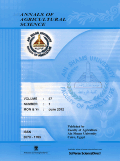
ANNALS OF AGRICULTURAL SCIENCES
Advancing Agricultural Knowledge for a Sustainable FutureANNALS OF AGRICULTURAL SCIENCES, published by Elsevier, stands as a leading open access journal dedicated to the multifaceted field of agricultural sciences. Since its inception in 2011, this journal has served as a pivotal platform for the dissemination of high-quality research, covering areas such as agronomy, animal science, horticulture, food science, plant science, and soil science. With an impressive Q1 ranking across multiple disciplines and notable positions in Scopus Ranks—including #6 in Animal Science and Zoology and #3 in Horticulture—this journal is recognized globally for its significant contribution to advancing agricultural innovations. The journal caters to a diverse audience of researchers, professionals, and students, providing them with open access to cutting-edge studies that address critical issues in agricultural productivity and sustainability. Its commitment to high-impact research ensures that articles contribute meaningfully to the scientific community, fostering advancements in agricultural practices and policies.

Food and Bioprocess Technology
Pioneering Insights in Food Science and EngineeringFood and Bioprocess Technology, an esteemed journal published by Springer, serves as a premier platform for disseminating cutting-edge research in the realms of food science, industrial manufacturing engineering, and process chemistry and technology. Established in 2008, the journal has quickly ascended to the prestigious Q1 quartile in multiple categories, highlighting its impact and relevance within the scientific community. With an impressive Scopus ranking that places it in the top tiers of its fields—such as rank #17 in Safety, Risk, Reliability, and Quality, and rank #38 in Food Science—this journal is pivotal for researchers and professionals aiming to publish innovative findings that advance food processing and bioprocess technology. Beyond its rigorous peer-review process, the journal facilitates access to high-quality, impactful research, reinforcing its significant role in shaping the future of biotechnological applications in food systems. Aimed at both scholars and practitioners, Food and Bioprocess Technology is an essential resource for those engaged in exploring sustainable practices and enhancing food quality and safety. Furthermore, by addressing essential topics in the field, it fosters collaboration and knowledge exchange among researchers dedicated to advancing the bioprocessing landscape.
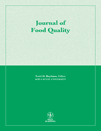
JOURNAL OF FOOD QUALITY
Innovative Research for a Healthier Food FutureThe Journal of Food Quality, an esteemed publication under Wiley-Hindawi, stands as a vital resource in the dynamic field of Food Science, established since 1977 and operating under an Open Access model since 2017. With its seat in the United Kingdom, this journal focuses on delivering high-quality research and insights pertaining to food safety, risk management, and quality assurance, reflected in its impressive Q2 ranking in both Food Science and Safety, Risk, Reliability and Quality categories in 2023. Researchers and professionals will find the journal’s contributions indispensable, particularly given its Scopus rankings that place it in the top echelons of its fields, highlighting its impact and relevance. By fostering an environment of knowledge sharing, the Journal of Food Quality not only enhances academic dialogue but also supports innovation and best practices in food research and industry applications.
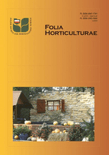
Folia Horticulturae
Connecting Researchers to the Heart of Horticulture.Folia Horticulturae, an esteemed journal in the field of Horticulture, serves as a pivotal platform for the dissemination of innovative research and developments within agricultural and biological sciences. Published by SCIENDO, this open-access journal has been contributing to the global scientific community since 2004, ensuring that key findings are freely accessible to researchers, professionals, and students alike. Based in Poland, the journal boasts an impressive Q2 ranking in Horticulture, indicating its solid impact and significance in the field, with a Scopus rank of #32 out of 115, placing it in the 72nd percentile. With a commitment to fostering scientific discourse, Folia Horticulturae actively encourages contributions that explore various aspects of horticultural science, from crop management to sustainability practices. This initiative not only enhances knowledge but also advances practical applications, making it an invaluable resource for anyone interested in the intricacies of horticulture.
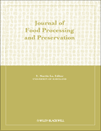
JOURNAL OF FOOD PROCESSING AND PRESERVATION
Transforming Knowledge into Action in Food PreservationJOURNAL OF FOOD PROCESSING AND PRESERVATION, published by Wiley-Hindawi, stands as a vital resource within the fields of Food Science, Chemical Engineering, and Chemistry. With an ISSN of 0145-8892 and an E-ISSN of 1745-4549, the journal has been a beacon of knowledge since its inception in 1977, continuing to provide valuable insights to the research community until 2024. Recognized for its quality, it holds a noteworthy Q2 ranking in 2023 across multiple categories, including Food Science and Chemical Engineering, indicating its influential contribution to the academic discourse. Although it offers no open access, the journal remains a crucial platform for disseminating groundbreaking research and innovative methodologies in food processing and preservation. Researchers, professionals, and students can significantly benefit from its comprehensive reviews, original research articles, and case studies, aimed at advancing knowledge and practices in food technology. By bridging the gap between theoretical advancements and practical applications, the JOURNAL OF FOOD PROCESSING AND PRESERVATION plays an essential role in addressing global food safety, sustainability, and quality challenges.
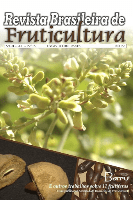
Revista Brasileira de Fruticultura
Showcasing Excellence in Brazilian Horticultural ScienceRevista Brasileira de Fruticultura, published by the Sociedade Brasileira de Fruticultura, is a leading scholarly journal dedicated to the advancement of research in the fields of agronomy, crop science, food science, horticulture, and plant science. With an impressive Open Access model adopted since 2001, the journal is committed to disseminating high-quality research from Brazil and beyond, promoting innovation and collaboration among researchers, professionals, and students alike. The journal currently holds a respectable Q3 category ranking in multiple fields as of 2023, reflecting its significance within the scientific community, specifically ranked #72 in horticulture and #257 in agronomy, among its peers. The Revista Brasileira de Fruticultura not only serves as a platform for original research articles, reviews, and case studies but also emphasizes practical applications and sustainable practices in fruit cultivation. Its aim is to enhance the visibility of Brazilian fruit research on a global scale, making it an invaluable resource for those invested in advancing horticultural sciences.
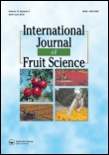
International Journal of Fruit Science
Shaping the landscape of fruit science through rigorous research.International Journal of Fruit Science, published by TAYLOR & FRANCIS INC, is a preeminent platform for the dissemination of high-quality research in the fields of Agronomy, Horticulture, Ecology, and Plant Science. With an impressive track record since its inception in 2005 and ongoing convergence up to 2024, this journal serves as a vital resource for scholars and industry professionals alike. Renowned for its rigorous peer-review process and comprehensive publication of cutting-edge studies, it holds a distinguished position in multiple Scopus rankings, including a top 10 placement in Horticulture (Rank #8/115) and notable percentiles, reflecting its significant impact in the academic community. Researchers can delve into critical insights related to fruit cultivation, genetics, and sustainability, bolstered by its Q1 and Q2 quartile standings across various categories. Though the journal is not open access, it remains an essential read for those intent on advancing knowledge and practices within the rapidly evolving landscape of fruit science.

Ornamental Horticulture-Revista Brasileira de Horticultura Ornamental
Cultivating Knowledge in Ornamental HorticultureOrnamental Horticulture - Revista Brasileira de Horticultura Ornamental, published by the SOC BRASILEIRA FLORICULTURA & PLANTAS ORNAMENTAIS, serves as a premier platform for disseminating high-quality research in the field of ornamental horticulture. With an Open Access model in place since 1995, this journal ensures that valuable findings in horticultural science reach a wide audience, fostering greater collaboration within the global community. Based in Brazil, this journal primarily focuses on the cultivation, management, and improvement of ornamental plants, contributing significantly to both the scientific and practical aspects of the horticulture industry. It has achieved esteemed rankings, including being classified in the Q2 quartile for Horticulture and Q3 for Plant Science in 2023, demonstrating its academic rigor and relevance. Scopus ranks it at 54th in Horticulture and 278th in Plant Science, positioning it among leading scholarly resources in these fields. The journal is committed to advancing knowledge through innovative research that aids in the sustainable development of ornamental horticulture practices.

Journal of Berry Research
Unraveling the Secrets of Berry BenefitsJournal of Berry Research, published by IOS PRESS, is an essential scholarly platform that addresses a wide array of topics related to the health benefits, cultivation, and innovation surrounding berry species. With an ISSN of 1878-5093 and an E-ISSN of 1878-5123, this journal has successfully carved a niche in various interdisciplinary fields, achieving notable rankings in its respective categories, including Q2 in Agronomy and Crop Science and Q3 in Biochemistry and Food Science as of 2023. The journal not only serves as a repository of rigorous research but also facilitates the exchange of knowledge among researchers, professionals, and students invested in agronomy, horticulture, and plant science. The HIndex reflects its growing impact within these disciplines. Set against the backdrop of the Netherlands since its inception in 2010, the Journal of Berry Research continues to provide cutting-edge insights, making it a pivotal resource for those pursuing advances in berry research and its associated fields.

AMERICAN JOURNAL OF POTATO RESEARCH
Exploring Innovations in Potato ResearchAMERICAN JOURNAL OF POTATO RESEARCH is a prominent scholarly journal dedicated to the field of potato research, encompassing vital areas of Agronomy and Crop Science. Published by SPRINGER, this journal holds an impactful presence in the scientific community, as evidenced by its placement in the Q2 quartile of both Agronomy and Plant Science categories for 2023. With a Scopus rank of #145 out of 406 in Agricultural and Biological Sciences, it offers a significant platform for researchers, professionals, and students alike. Covering diverse topics from cultivation techniques to pest management, the journal aims to advance understanding and innovation in potato science, facilitating the sharing of cutting-edge research and fostering collaboration among scholars. Accessible to a global audience, the journal encourages the dissemination of knowledge through its open-access options. Since its inception in 1998, the AMERICAN JOURNAL OF POTATO RESEARCH has been committed to contributing valuable insights that drive the industry forward and support sustainable agricultural practices.